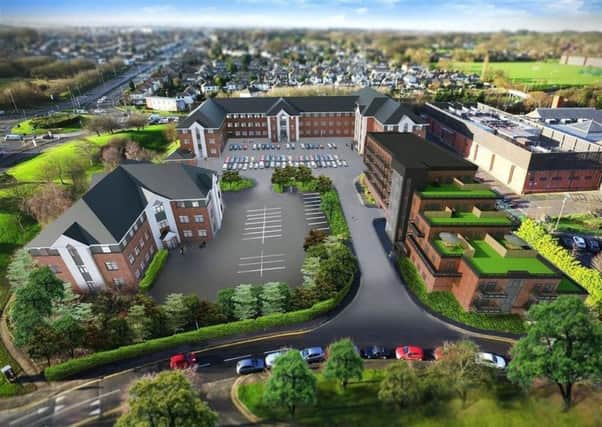Conversion could help solve the housing shortage


A glut of empty and under-used commercial buildings coupled with a housing shortage prompted the government to introduce permitted development rights for office-to-residential conversions in 2013.
They gave developers the chance to turn redundant offices into flats without the need for lengthy and expensive planning applications. Leeds-based Headoffice3 is one of the UK’s leading conversion specialists and tackles everything from costing, designing and construction for high-profile clients.
Advertisement
Hide AdAdvertisement
Hide AdIts CEO Glen Harding is campaigning for the PD rights to be upheld and extended to other commercial buildings and he puts the case here: “The office-to-residential sector has enjoyed a boom period thanks to the decline in office usage due to changing working practices. However, with accusations of developers and investors land banking and a slowdown of the numbers of permitted development applications being granted, are we seeing a diminishing interest in what was once a golden opportunity?
“The PD rights were originally introduced to ease the burden of new development in the light of ambitious house building targets, and the policy worked. Local authorities were obliged to support it and, within the first year, we saw 3,152 office-to-residential applications granted. The number for the first quarter of 2017 was 629 compared to 828 for the same period in 2015.
“As specialists in design and build, Headoffice3 has reaped the rewards. Starting out in 2015 with our first office conversion, we have since created around 1,000 new homes per year, the majority of which have been targeted at the most in-need population group – first-time buyers.
“More importantly, these homes have been fashioned from unwanted office space, which might otherwise have been a blight on the surrounding area but in spite of the positive impact of office-to-residential schemes, there is some prejudice against permitted development.
Advertisement
Hide AdAdvertisement
Hide Ad“Some planning authorities in the south of England have been invoking Article 4 directions, restricting the scope of permitted development rights, due to a genuine lack of office use buildings. However, others have done it to curtail the conversions for fear that it would be impossible to turn the building back to its former use.
“Yet our needs are changing. It is far better to convert existing property than to develop on greenbelt and brownfield sites. The other major benefit is that the cost of conversion is far lower than building from scratch, thus ensuring a greater likelihood of providing much-needed affordable housing. With infrastructure already in place, conversion is lower impact all round.
“Local authorities are fearful of land banking. In fact, many PD applications are for adding value to a property in view of a sale or tenancy renegotiation and therefore not intended to be developed, but they distort the ratios of consents to actual developments carried out. Another issue is that developers are often awarded consents on full planning applications with an increasing number of conditions, which make the schemes less attractive or slow to be built out.
“With a huge number of office buildings still available for conversion, we must let permitted development do what it was set out for. Dawsons Square in Pudsey is a good example. It was an abandoned 90,000 sq ft office complex, which we converted within just 14 months to provide 140 apartments.
Advertisement
Hide AdAdvertisement
Hide Ad“The latest Budget saw the government propose support for the conversion of empty space above shops and it pledged to consult on allowing PD rights for office buildings to be demolished and replaced with new homes. We at Headoffice3 believe that PD should be taken to the next level. Simply by looking at which buildings are no longer needed or in lower demand, it is clear that it’s not just disused office space which is ripe for conversion. We can see opportunities in the high street. Why not support an easier change-of-use of retail into residential, including ground floor space?”
*Headoffice3, www.headoffice3.com